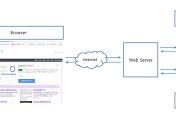Description: Load data from the server using a HTTP GET request.
version added: 3.0jQuery.get( [settings ] )
- settingsType: PlainObjectA set of key/value pairs that configure the Ajax request. All properties except for
urlare optional. A default can be set for any option with $.ajaxSetup(). See jQuery.ajax( settings ) for a complete list of all settings. The type option will automatically be set toGET.
version added: 1.0jQuery.get( url [, data ] [, success ] [, dataType ] )
- urlType: StringA string containing the URL to which the request is sent.
- dataType: PlainObject or StringA plain object or string that is sent to the server with the request.
- successA callback function that is executed if the request succeeds. Required if
dataTypeis provided, but you can usenullorjQuery.noopas a placeholder. - dataTypeType: StringThe type of data expected from the server. Default: Intelligent Guess (xml, json, script, or html).
This is a shorthand Ajax function, which is equivalent to:
1 2 3 4 5 6 |
|
The success callback function is passed the returned data, which will be an XML root element, text string, JavaScript file, or JSON object, depending on the MIME type of the response. It is also passed the text status of the response.
As of jQuery 1.5, the success callback function is also passed a "jqXHR" object (in jQuery 1.4, it was passed the XMLHttpRequest object). However, since JSONP and cross-domain GET requests do not use XHR, in those cases the jqXHR and textStatus parameters passed to the success callback are undefined.
Most implementations will specify a success handler:
1 2 3 4 |
|
This example fetches the requested HTML snippet and inserts it on the page.
The jqXHR Object
As of jQuery 1.5, all of jQuery's Ajax methods return a superset of the XMLHTTPRequest object. This jQuery XHR object, or "jqXHR," returned by $.get() implements the Promise interface, giving it all the properties, methods, and behavior of a Promise (see Deferred object for more information). The jqXHR.done() (for success), jqXHR.fail() (for error), and jqXHR.always() (for completion, whether success or error) methods take a function argument that is called when the request terminates. For information about the arguments this function receives, see the jqXHR Object section of the $.ajax()documentation.
The Promise interface also allows jQuery's Ajax methods, including $.get(), to chain multiple .done(), .fail(), and .always() callbacks on a single request, and even to assign these callbacks after the request may have completed. If the request is already complete, the callback is fired immediately.
1 2 3 4 5 6 7 8 9 10 11 12 13 14 15 16 17 18 19 20 21 |
|
Deprecation Notice
The jqXHR.success(), jqXHR.error(), and jqXHR.complete() callback methods introduced in jQuery 1.5 are deprecated as of jQuery 1.8. To prepare your code for their eventual removal, use jqXHR.done(), jqXHR.fail(), and jqXHR.always()instead.
Additional Notes:
- Due to browser security restrictions, most "Ajax" requests are subject to the same origin policy; the request can not successfully retrieve data from a different domain, subdomain, port, or protocol.
- If a request with jQuery.get() returns an error code, it will fail silently unless the script has also called the global.ajaxError() method. Alternatively, as of jQuery 1.5, the
.error()method of thejqXHRobject returned by jQuery.get() is also available for error handling. - Script and JSONP requests are not subject to the same origin policy restrictions.
Examples:
Request the test.php page, but ignore the return results.
1 |
|
Request the test.php page and send some additional data along (while still ignoring the return results).
1 |
|
Pass arrays of data to the server (while still ignoring the return results).
1 |
|
Alert the results from requesting test.php (HTML or XML, depending on what was returned).
1 2 3 |
|
Alert the results from requesting test.cgi with an additional payload of data (HTML or XML, depending on what was returned).
1 2 3 4 |
|
Get the test.php page contents, which has been returned in json format (<?php echo json_encode( array( "name"=>"John","time"=>"2pm" ) ); ?>), and add it to the page.
1 2 3 4 5 |
|
출처 : https://api.jquery.com/jquery.get/
'Skills > Web' 카테고리의 다른 글
| Cache Control (0) | 2019.10.18 |
|---|---|
| Cache for web (0) | 2019.10.18 |
| jQuery를 이용한 Modal 생성 (0) | 2015.12.31 |
| How to install Tomcat on CentOS 7 (0) | 2015.12.23 |
| Installing MySQL Server on CentOS (0) | 2015.09.23 |


댓글